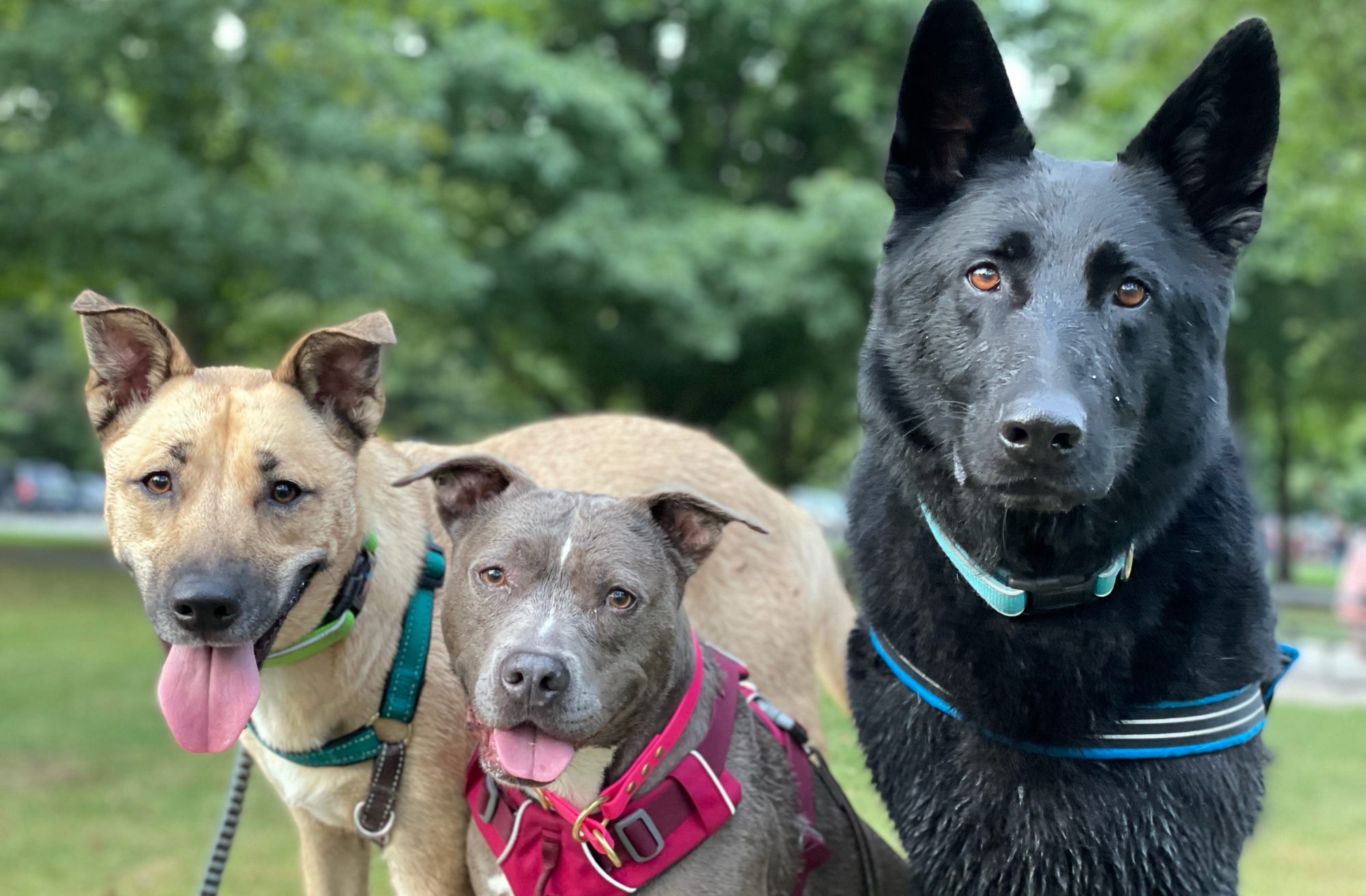Take a look at this dog. If this dog came into your local shelter, what breed(s) would she be classified as?
I just so happen to know this dog. She was a stray brought into the local humane society two years ago. She was labeled as a Labrador Retriever x Springer Spaniel mix. After she was adopted, I did some follow up training sessions with her and her human family members. The family was curious to know her breed(s) so I recommended they DNA test her using the Wisdom Panel test. They decided to do it and recently received the results. It turns out the little Labrador Retriever mix had no Primary markers for Labrador Retriever at all, or Springer Spaniel. Instead, she had markers for Collie and Australian Koolie for one of her parents and her other parent was a true mixed breed with low markers for Australian Shepherd and Standard Poodle.
So why does this matter? It matters because everyday mixed breed dogs come into shelters across the country. Many shelters and rescue groups use websites like Petfinder or PetPoint to promote and advertise the dogs they have available, but in order to list a dog on these sites, one must enter a primary breed. There is no true “mixed breed” option. For some dogs this may not matter, but for many other dogs this can mean the difference between life and death. If a dog comes in looking like a pit bull-type dog, that dog may never make it to an adoption floor. Chances are there are many dogs labeled as Pit Bulls that don’t have any primary markers for American Staffordshire Terrier or Staffordshire Bull Terrier in them. Many dog enthusiasts even have a hard time telling breeds apart, so how can we expect the general public to know better? Here’s a great little test for people, Find the Real American Pit Bull Terrier. All the dogs listed on this webpage are purebred dogs, but only one is actually an APBT.
In Minnesota for example, Animal Control agencies in the larger cities won’t allow any dog that appears to be a “Bully” breed or Mastiff to be adopted by the public. In fact up until recently they weren’t even allowing these types of dogs to go to rescue groups. Now they are allowing some rescue groups to pull some of the “blocky” looking dogs out, but way too often these dogs aren’t getting pulled in time and end up being euthanized.
It doesn’t just affect the “high profile” dogs, others dogs may be looked over because they are or are not labeled as a certain breed. Or if the dog was labeled as certain breed, adopters may place unrealistic expectations on what s/he should act like, for example, a family adopts a dog labeled as a Golden Retriever mix because Goldens have a reputation for being friendly with everyone and good with children. And the only reason the dog was labeled as a Golden was because s/he has long blonde hair and drop ears.
Offspring from two purebred dogs can look completely different from their parents. Take for example, the genetic studies done by Drs. John Scott and John Fuller in the 1950’s. These two doctors examined five breeds of purebred dogs and their hybrid offspring. The first generation (F1) of Besenjiis crossed with Cocker Spaniels looked nothing like either of their parents. Look into Genetics and the Social Behavior of the Dog by Scott and Fuller for further reading about their genetic studies and pictures of the F1 and F2 generations of dogs.
The only way to truly know if a dog is a purebred dog is if they are registered with a breed group and their lineage is traceable. Or to have a DNA test done and the primary markers come back for that breed.
This is not to say there aren’t some dogs with markings unique to their breed that would make them highly likely to be that breed, or at least a mix of it. However, as stated earlier there are many dogs that have a “generic” look to them and could be a mix of a variety of breeds. How many of the medium to large sized black dogs with floppy ears get labeled as Black Labrador Retrievers even though they may not have any Labrador Retriever in them? A lot, I’m guessing! And same goes for the blocky headed dogs with short coats being labeled as Pit Bulls.
What are the other options? Move away from labels and just call a dog a dog. Become more Objective with listing the dog’s traits, rather than basing everything on a breed. Describe what the dog actually looks like and facts about the dog: 50 pounds, black and brown, neutered male dog with semi-perk ears, a long tail and medium length coat. Assess the dog’s behavior to find out more about his personality. This will be more helpful for potential adopters anyway.
On websites like Petfinder, there could be the option of Small Mixed Breed, Medium Mixed Breed or Large Mixed Breed. It might actually be better to do away with breed classification altogether. Then people would be looking at dogs as individuals rather than a breed. Since, by and large, many people adopting dogs want a nice family pet and not a dog for a specific purpose, such as herding sheep or hunting fowl.
After all, dogs are individuals and should be judged by that first, not their breed or looks.



Hi Aditi,
Matt and I both enjoyed this post, thank you! He’s looking into adopting a dog right now and as we look at petfinder this is good to keep in mind! We also made our guesses on which dogs were pit bulls but couldn’t find the answer. Do you know for sure? Or was the point you were making that we don’t get to know 🙂